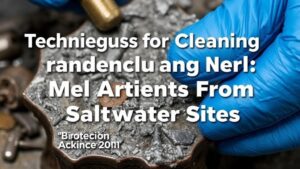Detecting for Silver in Urban Redevelopment Sites and Historic Courtyards
Detecting for Silver in Urban Redevelopment Sites and Historic Courtyards
The quest for valuable metals, particularly silver, in urban redevelopment sites and historic courtyards has gained traction in recent years as cities look to revitalize neglected areas. Detecting silver can unveil not only monetary gains but also historical narratives that reveal the evolution of urban landscapes. This article examines the methodologies, benefits, and challenges of detecting for silver in these contexts, along with relevant case studies.
The Importance of Detecting Silver
Silver detection in urban environments is significant for several reasons. Firstly, silver can signify the presence of historical artifact deposits, which can offer insights into the socioeconomic conditions of past populations. As a result, urban archaeologists and developers alike find value in uncovering these artifacts, which can help retain a communitys historic character while meeting modern development needs.
Methodologies for Silver Detection
Detecting silver in urban redevelopment sites involves various techniques that can be employed based on the specific context and conditions of the site. The primary methods are:
- Metal Detectors: Handheld metal detectors lead the way in non-invasive exploration. can efficiently detect low-conductivity metals like silver, especially in areas where artifacts might be buried.
- Ground-Penetrating Radar (GPR): This method uses radar pulses to image the subsurface. It is beneficial in identifying larger concentrations of silver and other artifacts that remain buried.
- Geological Surveys: Engaging professionals to conduct geological surveys can help in understanding the soil composition and identifying areas where silver is more likely to reside.
Factors Influencing Silver Detection
Several factors can influence the success rate of detecting silver, including:
- Site History: Areas with a rich history of silver usage or trade increase the likelihood of finding silver artifacts. For example, neighborhoods that were once home to silversmiths are more promising targets.
- Soil Composition: Soil types can affect the oxidation and preservation of silver. Urban sites with disturbed soil might yield better results due to mixed debris layers.
- Environmental Conditions: Moisture levels impact metal corrosion; thus, areas with stable, dry conditions are more favorable for silver preservation.
Case Studies
Understanding the practical applications of these methodologies is critical. Here are notable case studies:
The Los Angeles Silver Mine Discovery
In 2018, urban archaeologists unearthed a silver mine beneath downtown Los Angeles during redevelopment efforts. Using GPR, the team identified an extensive network of tunnels and deposit areas. This discovery not only revitalized interests in the local history of silver mining but also unearthed various silver artifacts, significantly boosting local tourism.
Historic Courtyards in Philadelphia
In Philadelphias historic district, multiple courtyards were surveyed to uncover buried silverware from the colonial period. Utilizing metal detectors, archaeologists discovered a cache of silver spoons and coins, which provided new insights into the daily life of early colonists. Such artifacts not only have monetary value but also serve as tangible connections to the past.
Challenges and Ethical Considerations
While detecting silver provides valuable insights, it also presents challenges and ethical considerations. One primary concern is ensuring that significant archaeological sites are not disturbed without adequate study. Also, local regulations often dictate the handling and ownership of found artifacts. Cooperation with local historical societies and adherence to legal frameworks is essential to maintain the integrity of cultural heritage.
Actionable Takeaways
For urban developers and archaeologists, detecting for silver in redevelopment sites and historic courtyards can yield significant benefits. Prioritizing proper methodologies and being mindful of site histories contribute to successful outcomes. Professionals interested in this field should consider the following actionable strategies:
- Conduct thorough historical research of the site prior to initiating any detection work.
- Use a combination of detection methodologies to maximize the possibility of finding silver artifacts.
- Engage with local communities and historians to enhance the development storyline and foster a collaborative approach to urban redevelopment.
To wrap up, the exploration for silver in urban redevelopment sites and historic courtyards is a confluence of archaeology, history, and urban development. By employing careful methodologies and engaging ethically with historical contexts, stakeholders can uncover valuable insights while honoring the past.



